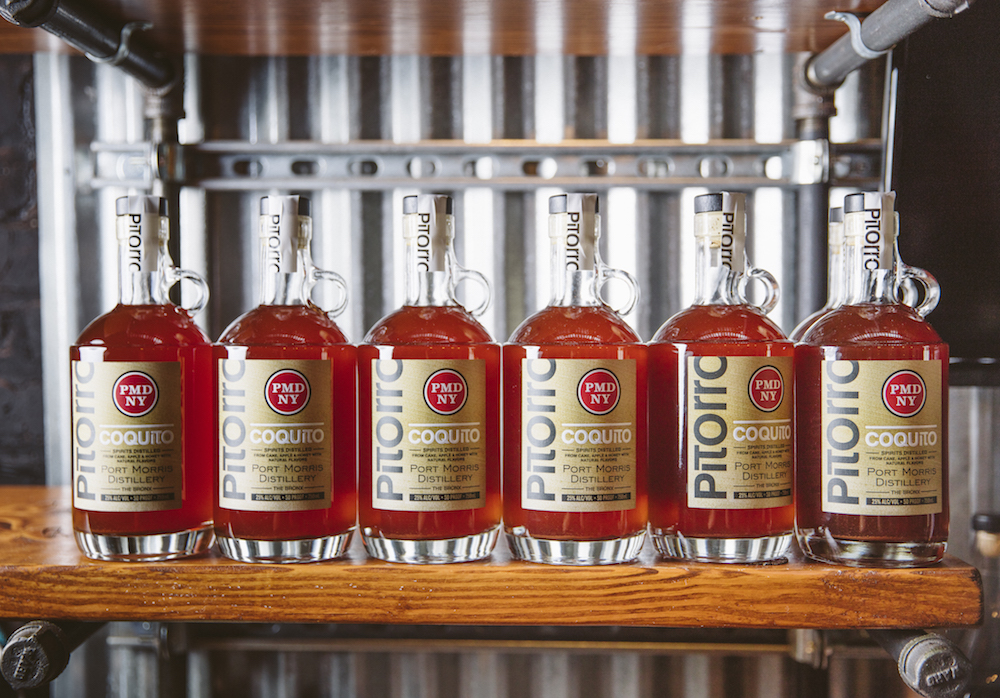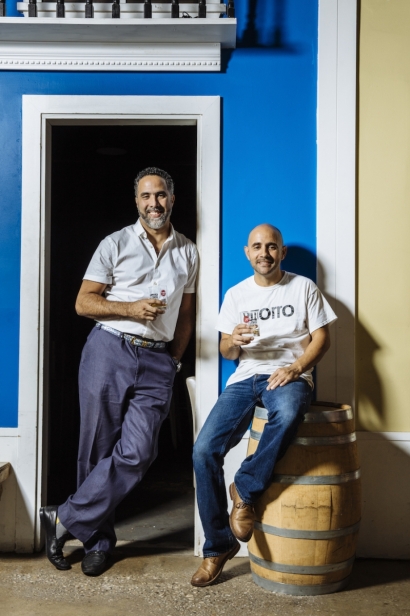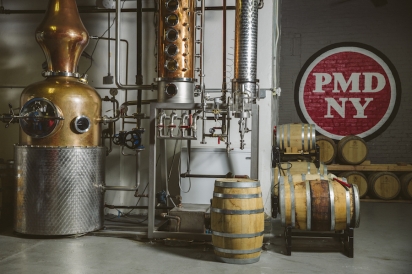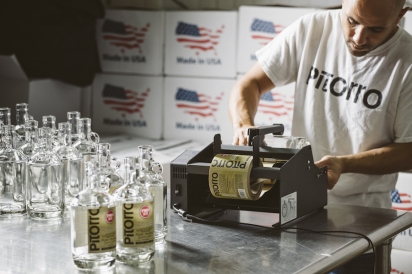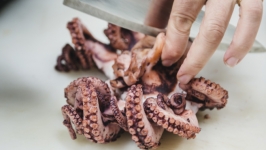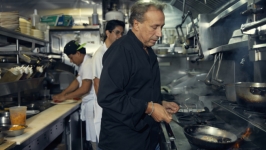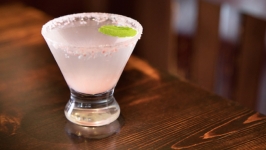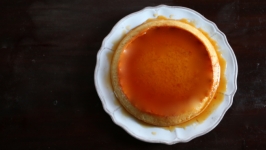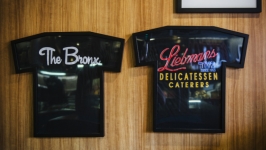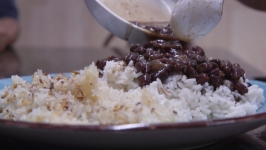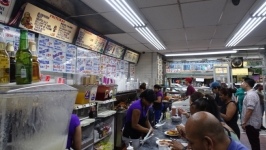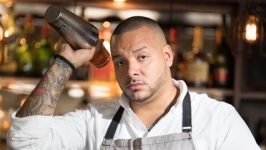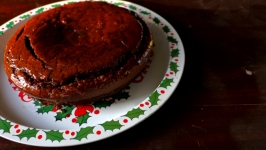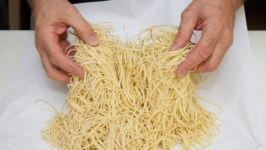A New Spin on a Puerto Rican Holiday Tradition
For many Puerto Ricans just saying the word coquito conjures a holiday 6 train from the icy Bronx down to sunny San Juan. It’s the cocktail equivalent of cranberry and turkey on the same fork; it’s eggnog and a pine tree.
Handcrafted in small batches, each family’s coquito recipe is different. Everyone’s grandmother makes it best—often drawing on family traditions passed down through generations.
Roughly translating to “from the coconut,” this holiday drink usually contains coconut cream, condensed milk and liquor. Some recipes call for vanilla extract, milk or eggs, and can include many different spices, said Rafael Barbosa, co-owner of the Port Morris Distillery (PMD).
Barbosa and company have created their own spin on coquito, one that both disregards and embraces tradition. They’ve done away with the dairy products and instead infused liquor with coconut and house-made cinnamon water. The result is a sweet holiday liqueur, without artificial flavors or dyes. It’s gluten free and essentially vegan, aside from the New York State–produced honey.
“The whole gist was to create a coquito that has a shelf life, that is OK for the lactose intolerant at the same time,” Barbosa said. “The difference is that it’s not the white, milky coquito that’s more traditional to the holidays. Ours is more of an amber because of the cinnamon. We take the cinnamon and cook it in our still; we extract the cinnamon water, and we blend in our pitorro with coconut.”
Pitorro is Puerto Rican moonshine.
“You’ll get a lot of different stories about traditional coquito. It’s really hard to create the traditional-traditional coquito because no one is climbing up and bringing down the actual coconut anymore. But traditionally, it would be made with pitorro,” he said.
Off the island, where pitorro is hard to find, many people make coquito with Bacardi or over-proof 151 rum. This is where PMD embraces tradition. For years, pitorro was the big, open secret in coquito. Cooked in hillside stills or mangrove hideouts and secretly distributed by unlicensed distillers, pitorro was the overproof hooch ubiquitous to the Isla del Encanto spirit industry long before Bacardi relocated there from Cuba. Like the Christmas cocktail it makes, pitorro has as many recipes as it does distillers, and Barbosa’s uncle’s recipe is “one of the best.”
Rum is made from sugarcane or molasses, but Tio—Barbosa’s moonshining uncle—swapped these out for brown sugar and seasonal fruits, removing a distinctive smoky flavor. The hybrid spirit would be classified somewhere between brandy (made from fruit) and rum (made from cane sugar), but it tastes wholly different from either.
“New York’s the apple capital of the world. Honey is also really big in New York State. So our mash is brown sugar, New York apples, New York honey,” he said. “So we’re our own thing. We’re a true moonshine.”
Barbosa keeps his 70-proof version refrigerated to add body. He said last year’s bottles flew off the shelves, so his team has been stocking up all summer for the expected rush.
Customers say the word coquito takes them back in time and latitude.
“It will take you back to the island. It will take you back to the festivals and festivities. It’s nice to hear in mid-August or mid-July that people drink it and say, ‘I feel like it’s Christmas.’ So I like to think it can take you to those festivities year round.”
PMD offers three bottled products, although they are avid experimenters. The base for everything is their pitorro. Clear and silver, it doesn’t carry the heavy alcohol burn you’d expect from a 92-proof drink. It’s clean on the palate (and carries the every-so-slight hint of almond particular to most moonshines). Aged for a year in whiskey barrels and then another year in new oak barrels, the pitorro Añejo is gold and slightly musty, but still very light even sipped neat at 80 proof. All three have an uncanny ability to change when blended with juice or soda.
True to form, the distillers are constantly trying new recipes—sometimes with great success: infusions of habanero, almond, coffee, honey, pineapple, tamarind and more. Sometimes the experiments don’t work out. The bottling room reeked of a sour funk recently after a botched attempt at distilling an imperial stout.
“I was just messing around. We try to distill anything. That’s the whole point of (our) craft,” Barbosa said. “It’s hard because we’re trying to break into a market where they’re accustomed to artificial flavors.”
At Port Morris Distillery they may be making moonshine, but their hardware is worlds apart from an outlaw’s makeshift still. PMD’s 105-gallon artisan copper distilling system—made in Stuttgart by Germany’s oldest distillery fabricator—pumps out roughly 12,000 bottles a year. It may seem like a lot, but it’s nothing compared to big distillers. PMD is firmly in the craft-distiller range, which attracts those interested in the craft movement, as well as in New York–made products.
Decorated like the painted streets of Old San Juan, the PMD tasting room has enthusiastic customers. The room is conspicuously absent any nation’s flag, so no one feels excluded. “At first,” he said, “we assumed it was going to be more of the Latino community. But come Saturday and Sunday, it’s everybody.” Recently some joggers stopped in. They liked it so much they booked a group of 150 for the next weekend.
Then Barbosa and team are in their element, explaining the history of pitorro, how they grew up with it and its variations.
The word pitorro has a shadowy etymology. Some say it’s derived from the Spanish word for “spout,” as in part of a still. Other’s say it’s a combination of the words for “whistle” and “run.” A lookout might whistle, pito, if police were approaching, and then shout “¡corre!” run away. Other theories have pitorro taken from the Latin “cloudy,” as a backyard moonshine bottle might be.
Whatever the origin of the word, the liquor is at the heart of coquito, and PMD is the only licensed distillery on the U.S. mainland.
780 E 133rd St, Bronx, NY 10454


